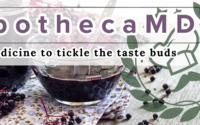Value-Added Compounds with Antimicrobial, Antioxidant, and Enzyme-Inhibitory Effects from Post-Distillation and Post-Supercritical CO2 Extraction By-Products of Rosemary
Antioxidants (Basel). 2023 Jan 21;12(2):244. doi: 10.3390/antiox12020244.
ABSTRACT
Hydrodistillation is the main technique to obtain essential oils from rosemary for the aroma industry. However, this technique is wasteful, producing numerous by-products (residual water, spent materials) that are usually discarded in the environment. Supercritical CO2 (SC-CO2) extraction is considered an alternative greener technology for producing aroma compounds. However, there have been no discussions about the spent plant material leftover. Therefore, this work investigated the chemical profile (GC-MS, LC-HRMS/MS) and multi-biological activity (antimicrobial, antioxidant, enzyme inhibitory) of several raw rosemary materials (essential oil, SC-CO2 extracts, solvent extracts) and by-products/waste materials (post-distillation residual water, spent plant material extracts, and post-supercritical CO2 spent plant material extracts). More than 55 volatile organic compounds (e.g., pinene, eucalyptol, borneol, camphor, caryophyllene, etc.) were identified in the rosemary essential oil and SC-CO2 extracts. The LC-HRMS/MS profiling of the solvent extracts revealed around 25 specialized metabolites (e.g., caffeic acid, rosmarinic acid, salvianolic acids, luteolin derivatives, rosmanol derivatives, carnosol derivatives, etc.). Minimum inhibitory concentrations of 15.6-62.5 mg/L were obtained for some rosemary extracts against Micrococcus luteus, Bacilus cereus, or Staphylococcus aureus MRSA. Evaluated in six different in vitro tests, the antioxidant potential revealed strong activity for the polyphenol-containing extracts. In contrast, the terpene-rich extracts were more potent in inhibiting various key enzymes (e.g., acetylcholinesterase, butyrylcholinesterase, tyrosinase, amylase, and glucosidase). The current work brings new insightful contributions to the continuously developing body of knowledge about the valorization of rosemary by-products as a low-cost source of high-added-value constituents in the food, pharmaceutical, and cosmeceutical industries.
PMID:36829802 | PMC:PMC9952831 | DOI:10.3390/antiox12020244

